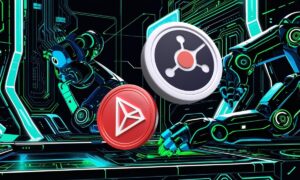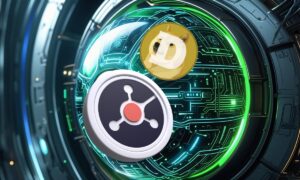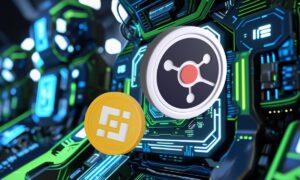At first, it was bitcoin. The revolutionary decentralized peer 2 peer digital currency that fundamentally disrupted the financial industry. The cryptocurrency was faster, cheaper and more secure to operate than any other in the world. Then came Ether with its Ethereum blockchain platform. This platform essentially allows others to create their own chains that run off the main net, giving a Launchpad to start their own tokens.
With the ability to easily create tokens and distribute them, using the Ethereum main net to piggyback, hundreds of platforms came into the market. Each with a unique idea, claiming to be the next big thing that would become the de facto choice of crypto in the future. With hundreds of coins and tokens in the market, it essentially became a cutthroat game.
MOBU Token
MOB20 is the MOBU token. This token creates a value that is used within the Mobu platform itself. This is a very crucial point since this means that the MOBU token cannot be used as a means of value exchange outside the platform. Essentially, the MOBU token is a utility token, only facilitating the activities within the MOBU ecosystem.
The token will be available for a standard price of USD 0.15 per token with a soft cap of USD 1 million.
The MOBU EcoSystem
The MOBU platform consists of seven distinct entities, all working together to create the architecture of the platform:
- Issuers: These are companies that wish to sell securities through the platform. They will decide on the complexity of the securities, jurisdictions they want to access, quantity and value of securities. When these and other parameters are decided, they can contact other teams on MOBU that will issue the security tokens.
- Developers: These are essentially software engineers who will help issuers create a smart contract for the distribution of the securities. Developers will also be able to review contracts made by other developers to ensure there are no loopholes or backdoors that can be exploited.
- KYC Agents: These are people who will run the KYC and AML procedure of the MOBU platform. Existing in physical locations around the world, investors wishing to take part in the ICOs set by MOBU will need to visit them and have their identities and credentials verified. KYC agents will need to pay for their registration as an incentive to stop fake KYC approvals. The fee earned from verification of investors will recover the payment made easily.
- Investors: These are individuals, companies and organizations that intend to invest and buy securities on MOBU. They will be eligible to buy only after KYC agents have approved of their legitimacy to the platform. Once able to, investors can take part in any ICO or trade of security tokens. Issuers have the right to define the payment method.
- Legal Representatives: These are people who place tenders and proposals to ensure the issuance of security tokens. Issuers can create a smart contract deal with them and let them handle all the issuance procedure for a fee.
- Escrow Providers: Since issuers will not have access to all the funds raised through ICO (to protect rights of investors and help them in liquidation on pro-rata basis. These providers will lock up the funds through smart contract proposals and release to issuers on a set timeline.
- Banks: Banks will be an essential part of the MOBU architecture since MOBU intends to ease investor entrance by having fiat to crypto services. This means that even if credited investors do not have cryptocurrency or tokens to take part in an ICO, they can transfer fiat through approved banks and either buy directly into the ICO, or have it converted to cryptos if the ICO has restrictions.
Based on these, the economics of the platform is very straightforward: An issuer proposes an ICO, Legal Representatives fill in tenders to handle it. Issuer selects the best tender and the security goes into ICO stage.
An investor wishing to buy the securities must first go through a KYC verification. This is a one time process and does not require repetition. A validated investor then can buy the security tokens. The investment money can come directly from approved banks.
After the securities have been bought, they can be held for coupon/dividends or traded with other credited investors.
In all these, the MOBU token plays an important part by being a utility token that can be used to buy and trade securities on the platform, thereby bringing the traditional methods of floating and trading securities into the digital blockchain age.
Website: https://mobu.io/



































